MARKETING
Why Even Crushing Content Failures Aren’t Mistakes

Did you follow the Apple iPad Pro content debacle?
Here’s a quick recap. A recent online ad for the new iPad Pro showed a large hydraulic press slowly crushing various symbols of creativity. A metronome, a piano, a record player, a video game, paints, books, and other creative tools splinter and smash as the Sonny and Cher song All I Ever Need Is You plays.
The ad’s title? “Crush!”
The point of the commercial — I think — is to show that Apple managed to smush (that’s the technical term) all this heretofore analog creativity into its new, very thin iPad Pro.
To say the ad received bad reviews is underselling the response. Judgment was swift and unrelenting. The creative world freaked out.
On X, actor Hugh Grant shared Tim Cook’s post featuring the ad and added this comment: “The destruction of the human experience. Courtesy of Silicon Valley.”
When fellow actor Justine Bateman shared the Tim Cook post, she simply wrote, “Truly, what is wrong with you?” Other critiques ranged from tone-challenged to wasteful to many worse things.
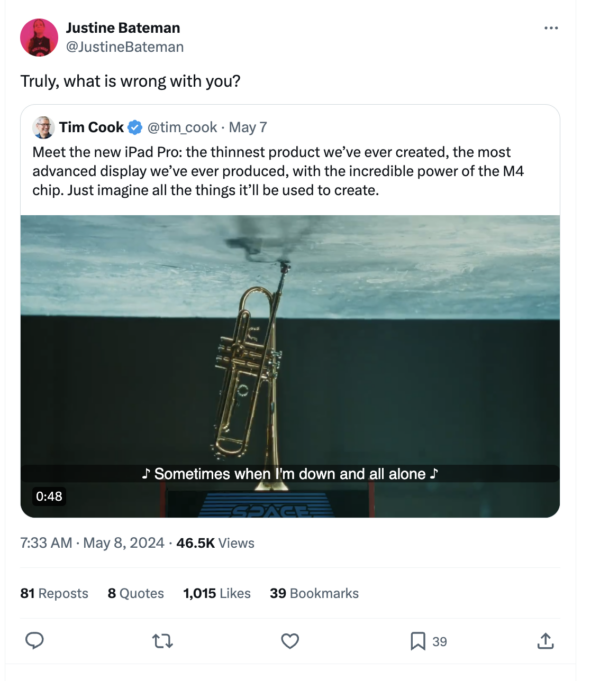
A couple of days later, Apple apologized and canceled plans to air the ad on television.
How not-so-great content ideas come to life
The level of anger surprises me. Look, the ad does show the eyeballs on an emoji-faced squishy ball popping under the plates’ pressure, but still. Calling the ad “actually psychotic” might be a skosh over the top.
Yes, the ad missed the mark. And the company’s subsequent decision to apologize makes sense.
But anyone who’s participated in creating a content misfire knows this truth: Mistakes look much more obvious in hindsight.
On paper, I bet this concept sounded great. The brainstorming meeting probably started with something like this: “We want to show how the iPad Pro metaphorically contains this huge mass of creative tools in a thin and cool package.”
Maybe someone suggested representing that exact thing with CGI (maybe a colorful tornado rising from the screen). Then someone else suggested showing the actual physical objects getting condensed would be more powerful.
Here’s my imagined version of the conversation that might have happened after someone pointed out the popular internet meme of things getting crushed in a hydraulic press.
“People love that!”
“If we add buckets of paint, it will be super colorful and cool.”
“It’ll be a cooler version of that LG ad that ran in 2008.”
“Exactly!”
“It’ll be just like that ad where a bus driver kidnaps and subsequently crushes all the cute little Pokémon characters in a bus!” (Believe it or not, that was actually a thing.)
The resulting commercial suffers from the perfect creative storm: A not-great (copycat) idea at the absolutely wrong time.
None of us know what constraints Apple’s creative team worked under. How much time did they have to come up with a concept? Did they have time to test it with audiences? Maybe crushing physical objects fit into the budget better than CGI. All these factors affect the creative process and options (even at a giant company like Apple).
That’s not an excuse — it’s just reality.
Content failure or content mistake?
Many ad campaigns provoke a “What the hell were they thinking?” response (think Pepsi’s Kendall Jenner ad or those cringy brand tributes that follow celebrity deaths).
Does that mean they’re failures? Or are they mistakes? And what’s the difference?
As I wrote after Peloton’s holiday ad debacle (remember that?), people learn to fear mistakes early on. Most of us hear cautionary messages almost from day one.
Some are necessary and helpful (“Don’t stick a knife in a live toaster” or “Look both ways before you cross the street.”) Some aren’t (“Make that essay perfect” or “Don’t miss that goal.”)
As a result, many people grow up afraid to take risks — and that hampers creativity. The problem arises from conflating failure and mistakes. It helps to know the difference.
I moved to Los Angeles in 1987 to become a rock ‘n’ roll musician. I failed. But it wasn’t a mistake. I wasn’t wrong to try. My attempt just didn’t work.
Labeling a failed attempt a “mistake” feeds the fears that keep people from attempting anything creative.
The conflation of failure and mistakes happens all too often in creative marketing. Sure, people create content pieces (and let’s not forget that there are always people behind those ideas) that genuinely count as mistakes.
They also create content that simply fails.
Don’t let extreme reactions make you fear failures
Here’s the thing about failed content. You can do all the work to research your audience and take the time to develop and polish your ideas — and the content still might fail. The story, the platform, or the format might not resonate, or the audience simply might not care for it. That doesn’t mean it’s a mistake.
Was the Apple ad a mistake? Maybe, but I don’t think so.
Was it a failure? The vitriolic response indicates yes.
Still, the commercial generated an impressive amount of awareness (53 million views of the Tim Cook post on X, per Variety.) And, despite the apology, the company hasn’t taken the ad down from its YouTube page where it’s earned more than 1 million views.
The fictional Captain Jean Luc Picard once said, “It is possible to commit no mistakes and still lose. That is not weakness. That is life.” The Apple ad turns that statement on its head — Apple made many mistakes and still won a tremendous amount of attention.
I’m not suggesting that people shouldn’t criticize creative work. Constructive critiques help us learn from our own and others’ failures. You can even have a good laugh about content fails.
Just acknowledge, as the Roman philosopher Cicero once wrote, “Not every mistake is a foolish one.”
Creative teams take risks. They try things outside their comfort zone. Sometimes they fail (sometimes spectacularly).
But don’t let others’ expressions of anger over failures inhibit your willingness to try creative things.
Wouldn’t you love to get the whole world talking about the content you create? To get there, you have to risk that level of failure.
And taking that risk isn’t a mistake.
It’s your story. Tell it well.
HANDPICKED RELATED CONTENT:
Cover image by Joseph Kalinowski/Content Marketing Institute
MARKETING
Why We Are Always ‘Clicking to Buy’, According to Psychologists

Amazon pillows.
MARKETING
A deeper dive into data, personalization and Copilots

Salesforce launched a collection of new, generative AI-related products at Connections in Chicago this week. They included new Einstein Copilots for marketers and merchants and Einstein Personalization.
To better understand, not only the potential impact of the new products, but the evolving Salesforce architecture, we sat down with Bobby Jania, CMO, Marketing Cloud.
Dig deeper: Salesforce piles on the Einstein Copilots
Salesforce’s evolving architecture
It’s hard to deny that Salesforce likes coming up with new names for platforms and products (what happened to Customer 360?) and this can sometimes make the observer wonder if something is brand new, or old but with a brand new name. In particular, what exactly is Einstein 1 and how is it related to Salesforce Data Cloud?
“Data Cloud is built on the Einstein 1 platform,” Jania explained. “The Einstein 1 platform is our entire Salesforce platform and that includes products like Sales Cloud, Service Cloud — that it includes the original idea of Salesforce not just being in the cloud, but being multi-tenancy.”
Data Cloud — not an acquisition, of course — was built natively on that platform. It was the first product built on Hyperforce, Salesforce’s new cloud infrastructure architecture. “Since Data Cloud was on what we now call the Einstein 1 platform from Day One, it has always natively connected to, and been able to read anything in Sales Cloud, Service Cloud [and so on]. On top of that, we can now bring in, not only structured but unstructured data.”
That’s a significant progression from the position, several years ago, when Salesforce had stitched together a platform around various acquisitions (ExactTarget, for example) that didn’t necessarily talk to each other.
“At times, what we would do is have a kind of behind-the-scenes flow where data from one product could be moved into another product,” said Jania, “but in many of those cases the data would then be in both, whereas now the data is in Data Cloud. Tableau will run natively off Data Cloud; Commerce Cloud, Service Cloud, Marketing Cloud — they’re all going to the same operational customer profile.” They’re not copying the data from Data Cloud, Jania confirmed.
Another thing to know is tit’s possible for Salesforce customers to import their own datasets into Data Cloud. “We wanted to create a federated data model,” said Jania. “If you’re using Snowflake, for example, we more or less virtually sit on your data lake. The value we add is that we will look at all your data and help you form these operational customer profiles.”
Let’s learn more about Einstein Copilot
“Copilot means that I have an assistant with me in the tool where I need to be working that contextually knows what I am trying to do and helps me at every step of the process,” Jania said.
For marketers, this might begin with a campaign brief developed with Copilot’s assistance, the identification of an audience based on the brief, and then the development of email or other content. “What’s really cool is the idea of Einstein Studio where our customers will create actions [for Copilot] that we hadn’t even thought about.”
Here’s a key insight (back to nomenclature). We reported on Copilot for markets, Copilot for merchants, Copilot for shoppers. It turns out, however, that there is just one Copilot, Einstein Copilot, and these are use cases. “There’s just one Copilot, we just add these for a little clarity; we’re going to talk about marketing use cases, about shoppers’ use cases. These are actions for the marketing use cases we built out of the box; you can build your own.”
It’s surely going to take a little time for marketers to learn to work easily with Copilot. “There’s always time for adoption,” Jania agreed. “What is directly connected with this is, this is my ninth Connections and this one has the most hands-on training that I’ve seen since 2014 — and a lot of that is getting people using Data Cloud, using these tools rather than just being given a demo.”
What’s new about Einstein Personalization
Salesforce Einstein has been around since 2016 and many of the use cases seem to have involved personalization in various forms. What’s new?
“Einstein Personalization is a real-time decision engine and it’s going to choose next-best-action, next-best-offer. What is new is that it’s a service now that runs natively on top of Data Cloud.” A lot of real-time decision engines need their own set of data that might actually be a subset of data. “Einstein Personalization is going to look holistically at a customer and recommend a next-best-action that could be natively surfaced in Service Cloud, Sales Cloud or Marketing Cloud.”
Finally, trust
One feature of the presentations at Connections was the reassurance that, although public LLMs like ChatGPT could be selected for application to customer data, none of that data would be retained by the LLMs. Is this just a matter of written agreements? No, not just that, said Jania.
“In the Einstein Trust Layer, all of the data, when it connects to an LLM, runs through our gateway. If there was a prompt that had personally identifiable information — a credit card number, an email address — at a mimum, all that is stripped out. The LLMs do not store the output; we store the output for auditing back in Salesforce. Any output that comes back through our gateway is logged in our system; it runs through a toxicity model; and only at the end do we put PII data back into the answer. There are real pieces beyond a handshake that this data is safe.”
MARKETING
Why The Sales Team Hates Your Leads (And How To Fix It)


You ask the head of marketing how the team is doing and get a giant thumbs up. 👍
“Our MQLs are up!”
“Website conversion rates are at an all-time high!”
“Email click rates have never been this good!”
But when you ask the head of sales the same question, you get the response that echoes across sales desks worldwide — the leads from marketing suck.
If you’re in this boat, you’re not alone. The issue of “leads from marketing suck” is a common situation in most organizations. In a HubSpot survey, only 9.1% of salespeople said leads they received from marketing were of very high quality.
Why do sales teams hate marketing-generated leads? And how can marketers help their sales peers fall in love with their leads?
Let’s dive into the answers to these questions. Then, I’ll give you my secret lead gen kung-fu to ensure your sales team loves their marketing leads.
Marketers Must Take Ownership
“I’ve hit the lead goal. If sales can’t close them, it’s their problem.”
How many times have you heard one of your marketers say something like this? When your teams are heavily siloed, it’s not hard to see how they get to this mindset — after all, if your marketing metrics look strong, they’ve done their part, right?
Not necessarily.
The job of a marketer is not to drive traffic or even leads. The job of the marketer is to create messaging and offers that lead to revenue. Marketing is not a 100-meter sprint — it’s a relay race. The marketing team runs the first leg and hands the baton to sales to sprint to the finish.
To make leads valuable beyond the vanity metric of watching your MQLs tick up, you need to segment and nurture them. Screen the leads to see if they meet the parameters of your ideal customer profile. If yes, nurture them to find out how close their intent is to a sale. Only then should you pass the leads to sales.
Lead Quality Control is a Bitter Pill that Works
Tighter quality control might reduce your overall MQLs. Still, it will ensure only the relevant leads go to sales, which is a win for your team and your organization.
This shift will require a mindset shift for your marketing team: instead of living and dying by the sheer number of MQLs, you need to create a collaborative culture between sales and marketing. Reinforce that “strong” marketing metrics that result in poor leads going to sales aren’t really strong at all.
When you foster this culture of collaboration and accountability, it will be easier for the marketing team to receive feedback from sales about lead quality without getting defensive.
Remember, the sales team is only holding marketing accountable so the entire organization can achieve the right results. It’s not sales vs marketing — it’s sales and marketing working together to get a great result. Nothing more, nothing less.
We’ve identified the problem and where we need to go. So, how you do you get there?
Fix #1: Focus On High ROI Marketing Activities First
What is more valuable to you:
- One more blog post for a few more views?
- One great review that prospective buyers strongly relate to?
Hopefully, you’ll choose the latter. After all, talking to customers and getting a solid testimonial can help your sales team close leads today. Current customers talking about their previous issues, the other solutions they tried, why they chose you, and the results you helped them achieve is marketing gold.
On the other hand, even the best blog content will take months to gain enough traction to impact your revenue.
Still, many marketers who say they want to prioritize customer reviews focus all their efforts on blog content and other “top of the funnel” (Awareness, Acquisition, and Activation) efforts.
The bottom half of the growth marketing funnel (Retention, Reputation, and Revenue) often gets ignored, even though it’s where you’ll find some of the highest ROI activities.


Most marketers know retaining a customer is easier than acquiring a new one. But knowing this and working with sales on retention and account expansion are two different things.
When you start focusing on retention, upselling, and expansion, your entire organization will feel it, from sales to customer success. These happier customers will increase your average account value and drive awareness through strong word of mouth, giving you one heck of a win/win.
Winning the Retention, Reputation, and Referral game also helps feed your Awareness, Acquisition, and Activation activities:
- Increasing customer retention means more dollars stay within your organization to help achieve revenue goals and fund lead gen initiatives.
- A fully functioning referral system lowers your customer acquisition cost (CAC) because these leads are already warm coming in the door.
- Case studies and reviews are powerful marketing assets for lead gen and nurture activities as they demonstrate how you’ve solved identical issues for other companies.
Remember that the bottom half of your marketing and sales funnel is just as important as the top half. After all, there’s no point pouring leads into a leaky funnel. Instead, you want to build a frictionless, powerful growth engine that brings in the right leads, nurtures them into customers, and then delights those customers to the point that they can’t help but rave about you.
So, build a strong foundation and start from the bottom up. You’ll find a better return on your investment.
Fix #2: Join Sales Calls to Better Understand Your Target Audience
You can’t market well what you don’t know how to sell.
Your sales team speaks directly to customers, understands their pain points, and knows the language they use to talk about those pains. Your marketing team needs this information to craft the perfect marketing messaging your target audience will identify with.
When marketers join sales calls or speak to existing customers, they get firsthand introductions to these pain points. Often, marketers realize that customers’ pain points and reservations are very different from those they address in their messaging.
Once you understand your ideal customers’ objections, anxieties, and pressing questions, you can create content and messaging to remove some of these reservations before the sales call. This effort removes a barrier for your sales team, resulting in more SQLs.
Fix #3: Create Collateral That Closes Deals
One-pagers, landing pages, PDFs, decks — sales collateral could be anything that helps increase the chance of closing a deal. Let me share an example from Lean Labs.
Our webinar page has a CTA form that allows visitors to talk to our team. Instead of a simple “get in touch” form, we created a drop-down segmentation based on the user’s challenge and need. This step helps the reader feel seen, gives them hope that they’ll receive real value from the interaction, and provides unique content to users based on their selection.
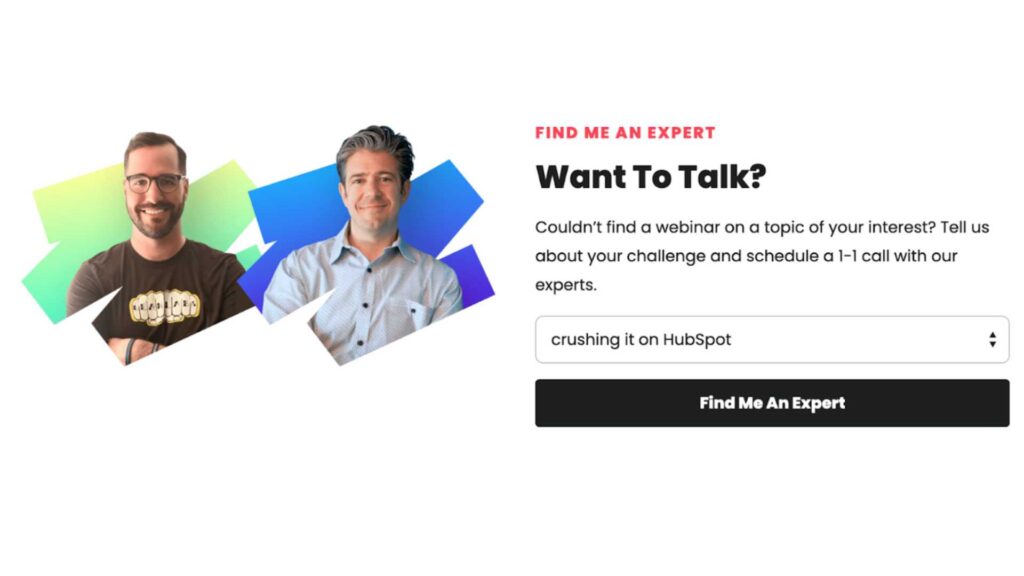

So, if they select I need help with crushing it on HubSpot, they’ll get a landing page with HubSpot-specific content (including a video) and a meeting scheduler.
Speaking directly to your audience’s needs and pain points through these steps dramatically increases the chances of them booking a call. Why? Because instead of trusting that a generic “expert” will be able to help them with their highly specific problem, they can see through our content and our form design that Lean Labs can solve their most pressing pain point.
Fix #4: Focus On Reviews and Create an Impact Loop
A lot of people think good marketing is expensive. You know what’s even more expensive? Bad marketing.
To get the best ROI on your marketing efforts, you need to create a marketing machine that pays for itself. When you create this machine, you need to think about two loops: the growth loop and the impact loop.
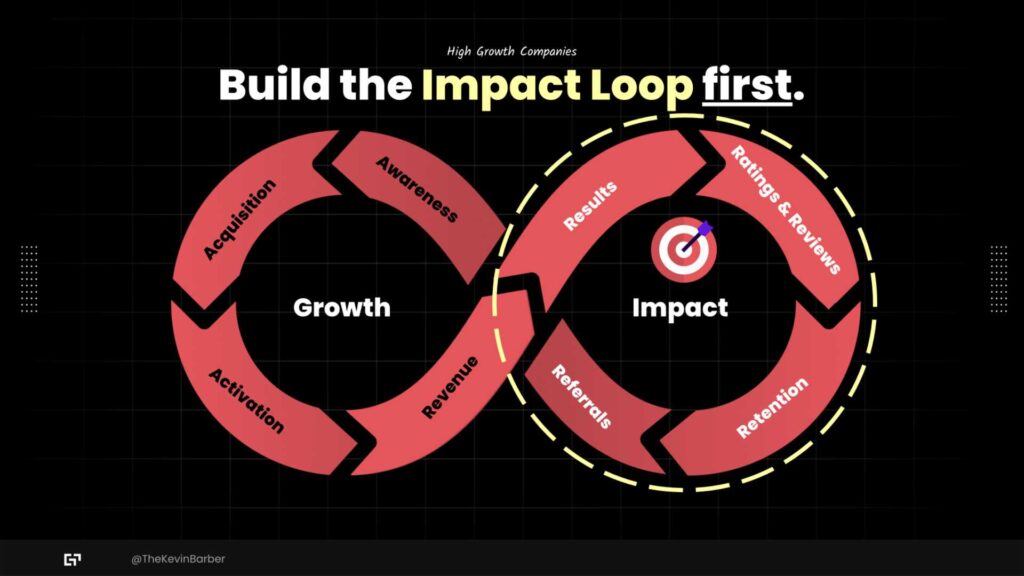

- Growth loop — Awareness ➡ Acquisition ➡ Activation ➡ Revenue ➡ Awareness: This is where most marketers start.
- Impact loop — Results ➡ Reviews ➡ Retention ➡ Referrals ➡ Results: This is where great marketers start.
Most marketers start with their growth loop and then hope that traction feeds into their impact loop. However, the reality is that starting with your impact loop is going to be far more likely to set your marketing engine up for success.
Let me share a client story to show you what this looks like in real life.
Client Story: 4X Website Leads In A Single Quarter
We partnered with a health tech startup looking to grow their website leads. One way to grow website leads is to boost organic traffic, of course, but any organic play is going to take time. If you’re playing the SEO game alone, quadrupling conversions can take up to a year or longer.
But we did it in a single quarter. Here’s how.
We realized that the startup’s demos were converting lower than industry standards. A little more digging showed us why: our client was new enough to the market that the average person didn’t trust them enough yet to want to invest in checking out a demo. So, what did we do?
We prioritized the last part of the funnel: reputation.
We ran a 5-star reputation campaign to collect reviews. Once we had the reviews we needed, we showcased them at critical parts of the website and then made sure those same reviews were posted and shown on other third-party review platforms.
Remember that reputation plays are vital, and they’re one of the plays startups often neglect at best and ignore at worst. What others say about your business is ten times more important than what you say about yourself.
By providing customer validation at critical points in the buyer journey, we were able to 4X the website leads in a single quarter!


So, when you talk to customers, always look for opportunities to drive review/referral conversations and use them in marketing collateral throughout the buyer journey.
Fix #5: Launch Phantom Offers for Higher Quality Leads
You may be reading this post thinking, okay, my lead magnets and offers might be way off the mark, but how will I get the budget to create a new one that might not even work?
It’s an age-old issue: marketing teams invest way too much time and resources into creating lead magnets that fail to generate quality leads.
One way to improve your chances of success, remain nimble, and stay aligned with your audience without breaking the bank is to create phantom offers, i.e., gauge the audience interest in your lead magnet before you create them.
For example, if you want to create a “World Security Report” for Chief Security Officers, don’t do all the research and complete the report as Step One. Instead, tease the offer to your audience before you spend time making it. Put an offer on your site asking visitors to join the waitlist for this report. Then wait and see how that phantom offer converts.
This is precisely what we did for a report by Allied Universal that ended up generating 80 conversions before its release.
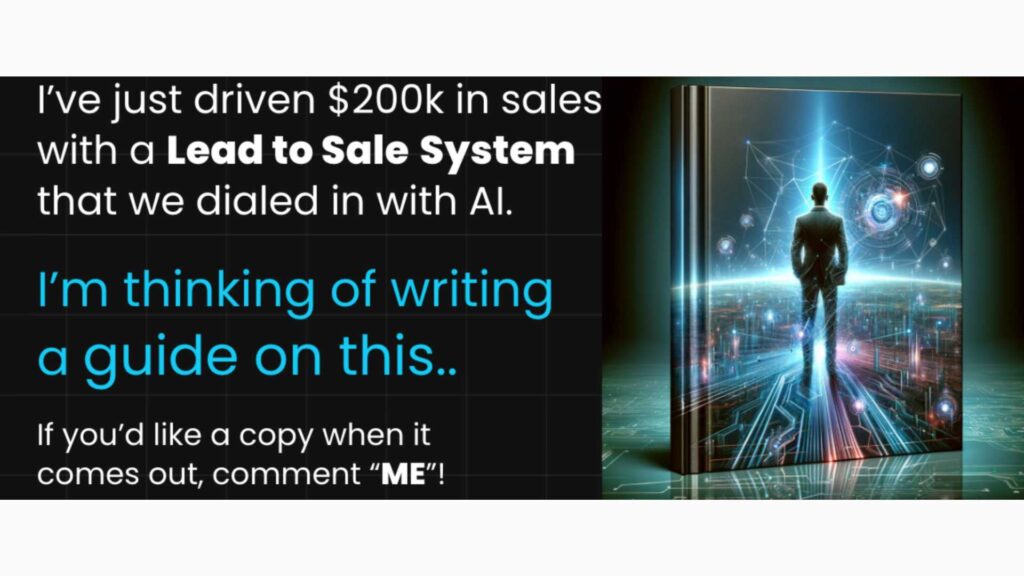

The best thing about a phantom offer is that it’s a win/win scenario:
- Best case: You get conversions even before you create your lead magnet.
- Worst case: You save resources by not creating a lead magnet no one wants.
Remember, You’re On The Same Team
We’ve talked a lot about the reasons your marketing leads might suck. However, remember that it’s not all on marketers, either. At the end of the day, marketing and sales professionals are on the same team. They are not in competition with each other. They are allies working together toward a common goal.
Smaller companies — or anyone under $10M in net new revenue — shouldn’t even separate sales and marketing into different departments. These teams need to be so in sync with one another that your best bet is to align them into a single growth team, one cohesive front with a single goal: profitable customer acquisition.
Interested in learning more about the growth marketing mindset? Check out the Lean Labs Growth Playbook that’s helped 25+ B2B SaaS marketing teams plan, budget, and accelerate growth.
-

 SEO7 days ago
SEO7 days agoGoogle On How It Manages Disclosure Of Search Incidents
-
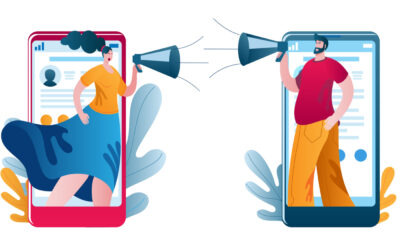
 SEO6 days ago
SEO6 days ago8 Ways To Promote Your Facebook Page Successfully
-
SEARCHENGINES5 days ago
Daily Search Forum Recap: June 10, 2024
-

 SEARCHENGINES6 days ago
SEARCHENGINES6 days agoGoogle Search Ranking Algorithm Volatility On June 8th
-

 SEO5 days ago
SEO5 days agoGoogle’s Statement About CTR And HCU
-

 SEO4 days ago
SEO4 days agoHow to Persuade Your Boss to Send You to Ahrefs Evolve
-

 WORDPRESS5 days ago
WORDPRESS5 days agoSay Hello to the Hosting Dashboard – WordPress.com News
-

 WORDPRESS4 days ago
WORDPRESS4 days agoA Small Business Guide to Building An E-Commerce Website | CO
















